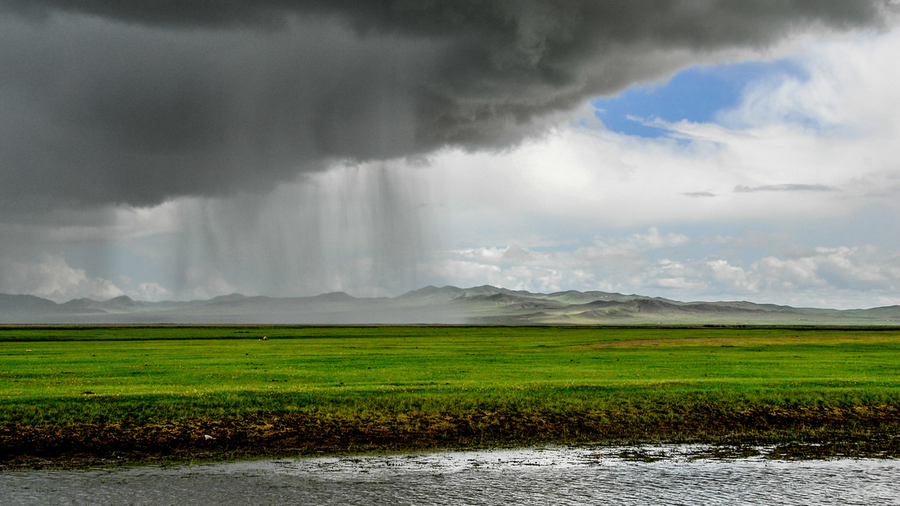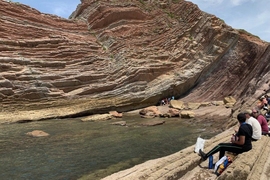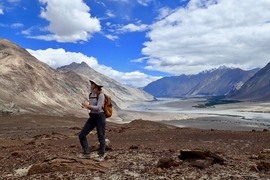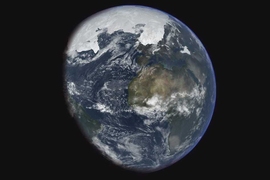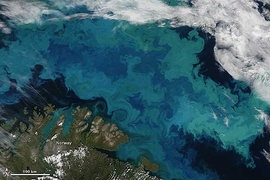Tree growth rings and ice cores illuminate the climatic conditions of times gone by. When combined with historical records and documents, climate data can also shed light on important events in human history — including the activities of nomadic groups such as the ancient Türks and Mongols.
“Climate data actually can tell us quite a lot about the history of nomadic empires,” said Nicola Di Cosmo, a professor at the Institute for Advanced Study and an expert on China and Inner Asian peoples and environmental history during a recent lecture in which he used a series of case studies to illustrate the links between climate history and nomadic empires. Such nomadic empires, Di Cosmo says, were “important historical protagonists” in shaping world events.
At the virtual event, Di Cosmo joined MIT associate professors David McGee, an expert on paleoclimate records, and Manduhai Buyandelger, a specialist in Mongolian anthropology.
“This is a really rich area of research,” said McGee. “Collaborations are the way forward — where you have experts who can read the complexity of the paleoclimate record and experts who can read the complexity of the human record.”
In the grassland steppes of Inner Asia, climate has a major impact on plant growth. Pastoral economies, which depend on grazing livestock like horse and sheep, are affected in turn. “The pastoral economy and the ecology of the steppe region is so sensitive — so vulnerable, also — to sudden climatic variability,” said Di Cosmo. A period of sudden drought or heavy snowfall can lead to major livestock die-offs.
A cold spell in the early seventh century hit the Eastern Türk empire, in the steppes of what is now Mongolia and China. Data from tree rings and ice cores show a brief period of unusually cool temperatures and heavy snowfall — the aftermath of a volcanic eruption. Volcanic eruptions push gases and small particles into the stratosphere, where they can deflect incoming solar rays and cause lower temperatures. In this case, historical documents indicate subsequent famine, increased taxation, political unrest, and a weakened military among the Eastern Türks — and the empire ultimately collapsed in 630 A.D.
But climate anomalies can also be beneficial. Recent tree ring data from 13th century Mongolia reveal that the normally warm, dry conditions were punctuated by a 15-year period that was unusually wet. This period coincides with the rise of Chinggis Khan’s Mongol empire. Di Cosmo and his colleagues came up with the idea that the empire’s success could partly be due to favorable climatic conditions during these wet years: with more plant growth, the fledgling Mongol empire could raise more horses, expand its army, and stage a flurry of intense military activity outside of Mongolia.
“A previous theory maintained that the Mongols were pushed out of Mongolia because of worsening climate conditions — in fact, because of drought,” said Di Cosmo. “We actually turned around that kind of thinking and conclude, based on new climate data, something quite different.”
Climate data can also shed light on particular, perplexing events. Why did the Mongols suddenly begin losing battles in 1242, after sweeping successfully across eastern Hungary only months before? Combining tree ring data with historical reports suggests the key lies in the weather. Dry, warm conditions in 1241 were favorable for the Mongol invasion of eastern Hungary — and an extremely cold, wet winter enabled them to cross the frozen Danube into western Hungary. But springtime thaws likely led to flooding and marshy conditions that made mounted warfare a liability.
“Di Cosmo demonstrates how new paleoclimate data helps to answer old or existing questions that have puzzled historians for a long time,” said Buyandelger.
Another puzzle is the Uyghur empire, which was “very different from other steppe empires,” said Di Cosmo. It grew less dependent on military power, perhaps due to limited resources, and developed a diversified economy that relied more on trade and agriculture rather than pastoralism or war. Di Cosmo’s work indicates that a 60-year drought around the start of the ninth century may have prompted this empire to develop in unusual ways.
Di Cosmo and his colleagues are currently focused on the 1257 eruption of the volcano Samalas, in Indonesia. This massive eruption — the largest release of volcanic gases in the past 2,000 years — triggered cool, wet conditions as far away as Europe. Di Cosmo’s team thinks these conditions might have hindered the Mongol invasion of Syria in 1260, and are using climate data to investigate.
One challenge of examining human history through a lens of paleoclimatology is that high-resolution climate data can be hard to obtain. But these nomadic empires coincided with clear data. “The tree ring records that Di Cosmo is working with are really the highest quality in terms of dating and spatially explicit information and calibration with modern data,” said McGee.
In systems where tree ring records are not available, there are alternatives. One project at MIT — led by Gabriela Serrato Marks PhD ‘20, a research specialist in McGee’s lab — is using stalagmites to help uncover the climatic context of past societal changes in Mexico. Ice cores and lake sediments provide more options for uncovering past climate conditions, and modeling can also be an important tool.
“One of the ways that paleoclimatologists are moving forward is by running climate models,” said McGee. “The models can help to fill in the gaps where we don't have data and to understand things that the data can't tell us, about wind patterns or about seasonality, for example.”
Meanwhile, present-day Mongolia is experiencing devastating droughts and winter weather as a result of global climate change. “Merging new climate data with the historical understanding of a place helps to put in perspective the catastrophic scale of climate change today,” said Buyandelger. “For instance, the heavy snowfalls in Mongolia in recent decades are the harshest in known history.”
In seeking solutions, we may be able to learn from past societies that adapted to poor climatic conditions. “Modern societies are much more complex than past societies, and so we have to factor in questions of industrialization and pollution and so forth,” said Di Cosmo. “But one of the things that history can do is help us understand better how societies in the past adapted or showed resilience.”
The virtual lecture was hosted by MIT Anthropology and co-sponsored by the Department of Earth, Atmospheric and Planetary Sciences and MIT History.
